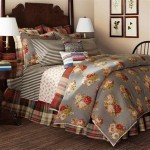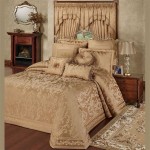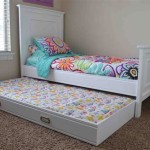How to Make Homemade Bunk Beds
Building homemade bunk beds can be a rewarding and cost-effective project for those with basic carpentry skills. This endeavor allows for customization and unique design elements, catering to specific needs and preferences. Creating bunk beds from scratch requires careful planning, accurate measuring, and meticulous execution, but the satisfaction of a well-crafted piece of furniture is undeniable. This guide provides a comprehensive overview of the essential steps involved in constructing homemade bunk beds.
1. Planning and Design
Before embarking on the construction process, meticulous planning is crucial. This involves envisioning the desired design, considering the dimensions, and selecting appropriate materials. Determine the overall size of the bunk beds, including the length, width, and height of the bed frame. Consider the age and size of the intended occupants, ensuring adequate space and safety. Choose durable and aesthetically pleasing wood for the bed frame, such as pine, oak, or maple. Solid wood provides strength and longevity, while plywood offers affordability and ease of use.
Next, sketch out a detailed plan, incorporating dimensions, materials, and assembly steps. This blueprint will serve as a visual guide throughout the construction process. When designing the bunk beds, prioritize safety features. Use sturdy materials for the ladder and guardrails, incorporating handrails for stability and preventing falls. Also, consider adding drawers, shelves, or other functional elements to enhance the overall utility of the bunk beds.
2. Gathering Materials and Tools
Once the design is finalized, gather the necessary materials and tools. This includes wood for the bed frame, plywood for the slats, screws, nails, wood glue, paint or stain, and any desired hardware. The choice of wood thickness will depend on the desired strength and weight capacity of the bunk beds. Select solid wood for the bed frame and slats for durability. Utilize wood glue to reinforce joints and prevent squeaking. Screws and nails provide secure fastening, while paint or stain adds a decorative touch and protects the wood.
In terms of tools, essential items include a saw (circular, miter, or jigsaw), a drill, a screwdriver, a sander, measuring tape, level, and a pencil. A circular saw facilitates cutting long boards with precision, while a miter saw ensures accurate angles for the frame. A drill and screwdriver are used for fastening screws and nails, while a sander smooths rough surfaces. A measuring tape ensures accurate dimensions, a level guarantees stability, and a pencil marks cutting lines.
3. Constructing the Bed Frame
Begin by cutting the wood for the bed frame according to the design plan. Utilize the saw to make precise cuts, ensuring that all pieces are the correct length and width. Once the pieces are cut, assemble the bed frame by joining the individual components using screws and wood glue. Ensure that all joints are securely fastened and that the bed frame is stable. It is recommended to pre-drill holes for screws to prevent wood splitting. Utilize a level to ensure that the bed frame is perfectly horizontal.
After assembling the bed frame, cut and attach the slats to create the support for the mattress. These slats are essential for distributing weight evenly and ensuring a comfortable sleeping surface. Typically, slats are made from plywood and secured to the bed frame with screws. Ensure that the slats are spaced evenly for maximum support. This process involves cutting the plywood to the appropriate length and attaching it using screws or nails.
4. Building the Ladder and Guardrails
The ladder and guardrails are crucial safety features for bunk beds. The ladder provides access to the upper bed, and the guardrails prevent falls. The ladder can be constructed using sturdy wood pieces, joined together to create steps. Ensure that the ladder is securely attached to the bed frame for stability. The guardrails are typically made from wood or metal and attached to the sides of the upper bed. They should be high enough to prevent occupants from falling out. The guardrails should be firmly secured to the bed frame, and it is advisable to add handrails for additional safety.
The construction of the ladder and guardrails involves measuring, cutting, and assembling the components. Utilize screws and wood glue to create secure connections. The ladder should be positioned at a comfortable angle for easy climbing and descending. The guardrails should be placed at a safe height, ensuring maximum protection. Consider adding decorative elements to the ladder and guardrails, such as paint, stain, or carving, to enhance the aesthetics of the bunk beds.
5. Finishing Touches
Once the construction is complete, sand down all surfaces to remove rough edges and splinters. This creates a smooth and comfortable finish. After sanding, apply a protective coating, such as paint or stain, to enhance the durability and appearance of the bunk beds. Choose a finish that complements the overall design and style of the room. Consider adding decorative elements, such as drawer pulls, handles, or lighting fixtures, to personalize the bunk beds.
After completing the construction, inspect the entire structure thoroughly for any loose screws or connections. Ensure that all components are securely fastened and that the bed frame is stable. Once satisfied with the construction and safety, the bunk beds are ready for use.

2x4 Bunk Bed Rogue Engineer

One Room Challenge Week 2 Diy Built In Bunkbeds For Around 700 Chris Loves Julia

17 Creative Diy Bunk Bed Ideas

Diy Bunk Beds The Designery

Diy Built In Bunk Beds Lauren Koster Creative
:max_bytes(150000):strip_icc()/ana-white-free-bunk-bed-plans-587fbf8e3df78c17b6b55f0f.jpg?strip=all)
8 Free Diy Bunk Bed Plans You Can Build This Weekend

How To Make Diy Built In Bunk Beds Young House Love

How To Build A Built In Bunk Bed Plank And Pillow

17 Easy Steps For A Diy Built In Bunk Bed Start At Home Decor

35 Diy Bunk Bed Ideas Simplified Building







